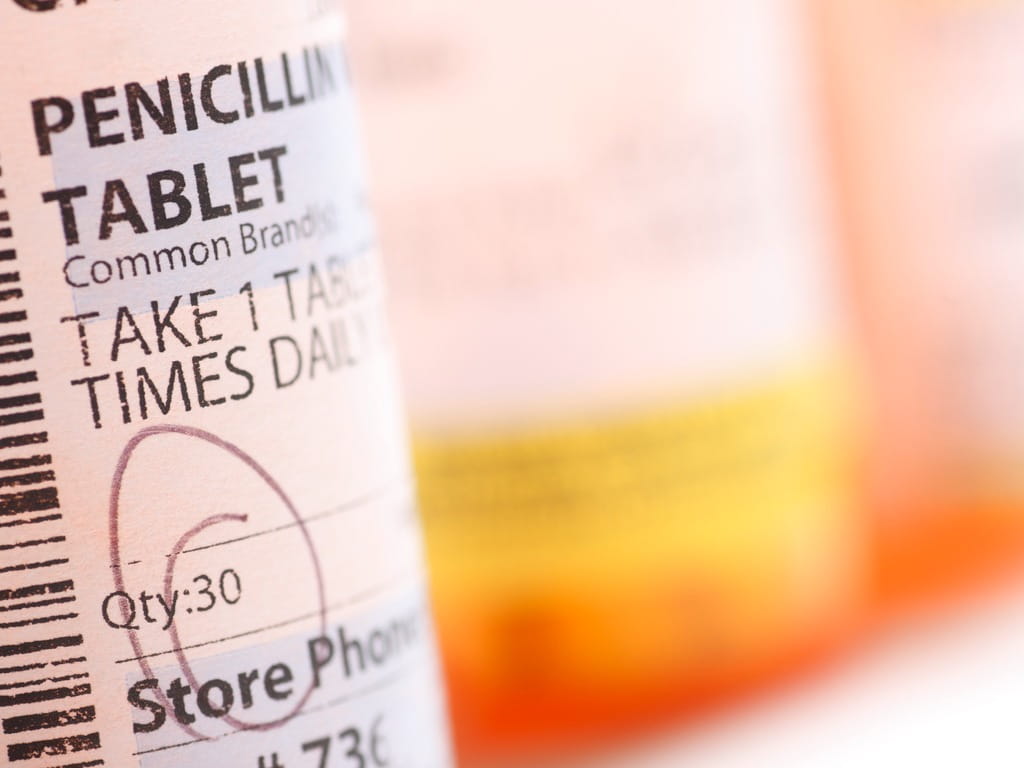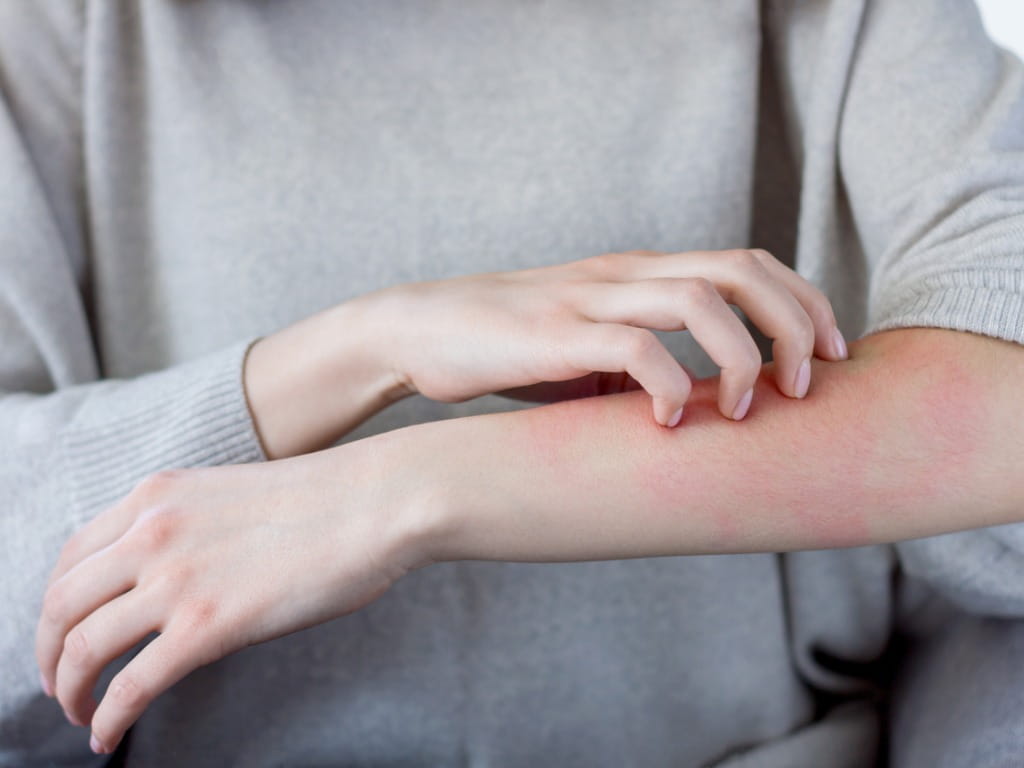What Does it Mean to Have a Penicillin Allergy?

The Bottom Line
Up to 10% of people who take penicillin can have an allergic reaction. However, life-threatening reactions (anaphylaxis) are very rare. Most people with a penicillin allergy can safely take related medications, including cephalosporins.

What is penicillin used for?
Penicillin antibiotics are used to treat a variety of common infections, such as strep throat, skin infections, ear infections, and pneumonia. Newer penicillin drugs also treat severe and life-threatening infections such as bloodstream infections (including sepsis), urinary tract infections, abdominal infections, and meningitis (inflammation around the brain). Cephalosporin antibiotics are structurally related to penicillin and serve similar purposes.Is penicillin safe?
Both penicillin and cephalosporins are generally considered safe and are very effective at treating both simple and serious infections. For this reason, they are considered the first choice for treating many infections.Can I take cephalexin if I’m allergic to penicillin?
Cephalexin is a cephalosporin antibiotic. Cephalosporins can cause allergic reactions, although less frequently than penicillin. While there is some cross-reactivity between penicillin and cephalosporins, people who have had an allergic reaction to penicillin can often take cephalosporins without a problem.Does penicillin have side effects?
While penicillin is generally safe, it can have some adverse effects. Some people will experience an upset stomach or diarrhea. Allergic reactions can occur in up to 10% of people who take penicillin. Allergic reactions vary from a mild rash to anaphylaxis, which can be life-threatening. Anaphylaxis can result in airway swelling, trouble breathing, and low blood pressure. Less than 1% of people who take penicillin experience anaphylaxis and anaphylaxis-related deaths are quite rare. Anaphylaxis is treated with medications such as epinephrine, corticosteroids, and antihistamines.
Not all rashes that occur while taking penicillin are the result of an allergy, as some can occur in people taking penicillin while they have infectious mononucleosis (or “mono”). One study showed that in people who reported a penicillin allergy as children, over 90% did not actually have an allergy based on skin testing results. Some people who had a reaction to penicillin as children can lose that sensitivity over time. Other side effects, such as an upset stomach or diarrhea, are not considered allergic reactions.
What should I do if I think I have a penicillin allergy?
It is important to know if you have had an allergic reaction to penicillin and what that reaction was. This will help your doctor prescribe the best drug to treat your infection while minimizing side effects. One study showed that hospitalized patients who reported penicillin allergy on admission had more complications and higher rates of death from infection. Instead of getting the most effective antibiotic for their condition, these patients received a less effective alternative antibiotic that had more side effects.
If you had an anaphylactic reaction to penicillin, you should not take penicillin again. But if you had a milder reaction, it could be safe to take a penicillin derivative or cephalosporins. You should let your healthcare team know about your medication allergies and the symptoms of those allergies so you can receive the most effective and safe treatment possible. It is important to keep up-to-date allergy information in your electronic health record.
If someone is experiencing an allergic reaction, contact your healthcare provider and seek medical care. If the person is having trouble breathing or facial swelling, call 911 for immediate assistance. If someone took too much of an antibiotic, or if you have a question about antibiotic safety, help from experts is available through the webPOISONCONTROL online tool and by phone at 1-800-222-1222. Both options are free, confidential, and available 24 hours a day.
Maryann Amirshahi, PharmD, MD, MPH, PhD
Medical Toxicologist
Revised William G. Troutman, PharmD
Professor of Pharmacy Emeritus
Poison Control Media Information
Did you find this page helpful? If so, we need your support. Poison Control is in constant competition with misinformation online. Links to www.poison.org or our webPOISONCONTROL triage tool from other websites and blogs help internet searchers quickly find accurate information and Poison Control’s contact information in an emergency. If you use the content from this page, please provide attribution via a link back to this page, www.poison.org, or https://triage.webpoisoncontrol.org/#!/exclusions. By doing so, you could save a life. Thank you!
Poisoned?
Call 1-800-222-1222 or
Prevention Tips
- Do not take penicillin if you have had an anaphylactic reaction to penicillin in the past.
- Inform all members of your healthcare team if you have had an allergic reaction to any medication and describe the reaction.
- Seek medical attention if you are taking penicillin or cephalosporin and you are having facial swelling or trouble breathing.
This Really Happened
Case 1: A 52-year-old man took 2500 mg of penicillin all at once to try to treat his dental abscess. He developed nausea, vomiting, and a rapid heart rate. He was seen in the emergency department and treated for mild dehydration with intravenous fluids. His lab work was drawn and his organ function looked normal. He was discharged home and recovered without long-term problems.
Case 2: A 20-month-old girl opened a bottle of penicillin 500 mg tablets and ingested one. The mother called the Poison Center and was advised to provide fluids for the child to drink and observe for symptoms. The child remained well.
For More Information
Penicillin allergy-what do you need to know? American Academy of Allergy, Asthma, and Immunology. October 23, 2023, Accessed March 9, 2024.
References
Joint Task Force on Practice Parameters; American Academy of Allergy, Asthma and Immunology; American College of Allergy, Asthma and Immunology; Joint Council of Allergy, Asthma and Immunology. Drug allergy: an updated practice parameter. Ann Allergy Asthma Immunol. 2010;105(4):259-273.
Poisoned?
Call 1-800-222-1222 or
Prevention Tips
- Do not take penicillin if you have had an anaphylactic reaction to penicillin in the past.
- Inform all members of your healthcare team if you have had an allergic reaction to any medication and describe the reaction.
- Seek medical attention if you are taking penicillin or cephalosporin and you are having facial swelling or trouble breathing.
This Really Happened
Case 1: A 52-year-old man took 2500 mg of penicillin all at once to try to treat his dental abscess. He developed nausea, vomiting, and a rapid heart rate. He was seen in the emergency department and treated for mild dehydration with intravenous fluids. His lab work was drawn and his organ function looked normal. He was discharged home and recovered without long-term problems.
Case 2: A 20-month-old girl opened a bottle of penicillin 500 mg tablets and ingested one. The mother called the Poison Center and was advised to provide fluids for the child to drink and observe for symptoms. The child remained well.
